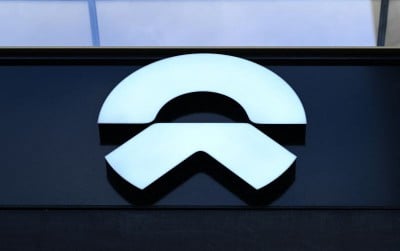
boonchai wedmakawand
As the pandemic fades, businesses are having an easier time making and shipping things—and that could help vanquish today’s overheating inflation.
Recent industry data suggests that supply chains that had been fouled up during the pandemic have been improving. For example, the Global Supply Chain Pressure Index, a measure of disruptions in shipping and manufacturing by the Federal Reserve Bank of New York, has fallen more than three quarters since its worst reading in December 2021.
Key Takeaways
- Complex global supply chains, which had been disrupted by the pandemic, have gotten better in recent months, reducing costs for businesses.
- As difficulties with producing and shipping products dissipate, shoppers will eventually start to see price increases on store shelves diminish.
- It could take some time for the supply chain improvements to translate into lower inflation, experts say—and not everything is going to get cheaper.
Those supply chain-related cost savings should eventually work their way through the economy to the prices we see on store shelves, economists say. And that should help to quash inflation that’s still uncomfortably close to the more than 40-year high it hit this summer.
“We are seeing supply chains going back to the way things were before COVID,” said Oren Klachkin, lead economist at Oxford Economics. “The situation is definitely trending in an encouraging direction and that, all else being equal, will help to put less upward pressure on inflation.”
The onset of COVID-19 caused chaos in the complex logistical systems that make things and get them to where they’re needed. Factories in China closed down to slow the spread of the pandemic. Trucking companies had a hard time finding drivers because of a pandemic-induced labor shortage. With computer chip factories in Taiwan shut down, car manufacturers couldn’t get the materials they needed to build new vehicles. A huge floating traffic jam of container ships built up off the Port of Los Angeles. These and other problems helped push prices relentlessly upward.
But these problems have been improving lately, and that could influence the prices we pay for things, especially physical goods. Since companies are paying less to make and ship their products, they’ll have more room to cut prices if they need to, James Knightley, chief international economist at ING, said in a commentary.
Prices for physical products will see improvements first, and later services, Klachkin predicted, although he noted that it takes supply chain changes a long time to work their way to the actual prices people pay at the cash register. And while inflation has been cooling lately, Klachkin said it was unlikely this has been a direct result of the improving supply system.
The “dramatic turnaround” in supply chains could help push inflation down significantly in the months ahead, Ian Shepherdson, chief U.S. economist at Pantheon Macroeconomics, wrote in a commentary Wednesday.
Shipping Is Getting Back in Shape
One of the most notable areas of improvement is in the realm of transportation.
The cost of shipping things by sea has fallen 73% since peaking in September 2021 and is down nearly to pre-pandemic levels, according to the Drewry World Container Index, which measures the cost to ship a standard 40-foot container along different global routes.
In another sign of better times on the high seas, that floating cargo ship traffic jam off the coast of southern California is virtually gone. The logjam, which had gotten as bad as 109 ships in January 2021, has diminished to just five as of Wednesday, and had gotten as low as a single ship at one point in October, according to data from the Marine Exchange of Southern California, a nonprofit group that tracks the comings and goings of vessels off the West Coast.
To be sure, you shouldn’t expect prices for everything to start falling right away just because it’s now cheaper to make and ship things. Prices for used cars, which spiked during the pandemic, are likely to stay high for quite some time, predicted Chris Frey, senior manager of economic and industry insights at Cox Automotive.
That’s because the used car market is quite unlike the one for new products.
“It’s not like, say, a widget factory got shut down, but once it gets run back up, people can actually start to buy the same amount of widgets again,” Frey said. “That’s not the same with used vehicles.”
The shortfall in production of new vehicles over the past few years has meant that fewer used ones are going to be on the market in the years to come (since after all, every used car was once a new car). With demand staying high and the supply of cars remaining restricted, it’s unlikely that used car prices will go down too much, Frey said.
Have a question, comment, or story to share? You can reach Diccon at [email protected].






